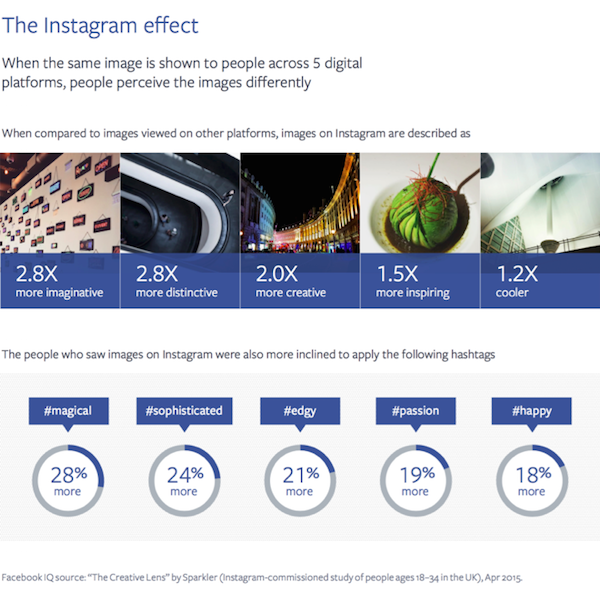
Get your FREE 30-day trial.
Please complete all fields.
The marriage of the natural shift to mobile with the rise of image-based communication has produced the picture-perfect offspring: Instagram. It is a place that gives a sense of legitimacy and artistic merit to even a spontaneous iPhone snap, that captures the immediacy of a moment in time.
As a brand however, how do you provide a real connection to people and create the right content without alienating your users? According to Gord Ray, Head of Brand at Instagram, 47% of the content consumed in people’s Instagram feeds is from accounts they don’t know, which is a huge opportunity for the brands that get it right. Which is all well and good, however as the brand, how do you get into that next stage, the elusive 53%? One of the keys to advertising success on Instagram is an ad placement that appears native and visually relevant within the the Instagram feed.
Instagram grew exponentially in 2015. However as brands rushed for an advertising presence when it opened its API at the end of September, it appears that some creative agencies and internal teams did not have a chance to keep up with creative quality. Before that point, Instagram advertising was largely reserved for big advertisers, with big budgets, in selected countries. Because Facebook purchased Instagram in 2012, there can be a false perception that both platforms are extensions of the other for media execution, with some Instagram media being tagged on as an extra ‘placement’ rather than a standalone advertising asset. However, despite Instagram being owned by Facebook, they must be seen as platforms with entirely different identities. Over time we have come to the realization that the same images do not necessarily perform equally as successfully on Facebook as they do on Instagram (or vice versa!).
As a result of these learnings, in 2016 sophisticated advertisers should focus on Instagram creative quality, as brands and agencies begin to appreciate that users differ on each platform, not only demographically, but in the way they operate.
Creatives on Instagram need to match the eclectic nature of users’ personal accounts - a hard balance when following rigorous brand guidelines and briefs. According to millennial users, the largest generation on Instagram, the attributes they associate with content that they follow is that it is ‘amusing,’ ‘creative,’ ‘beautiful,’ and ‘inspiring.’ To be a successful brand advertiser on Instagram, you need to make sure that you are fulfilling that brief, even if you are targeting outside of the millennial bracket.
Instagram’s success makes it a great bet for your 2016 advertising strategy. Studies by Instagram have shown that it fosters the ‘presenter effect’ – a phenomenon where the same creative image was shown natively on five different social media platforms, with Instagram enjoying the best feedback amongst its counterparts. Instagram’s images were perceived as more imaginative, distinctive, creative, and inspiring than the same image on all of the other five tested platforms (Sparkler, Instagram: The Creative Lens Research, April 2015). Brands need to step up their game in 2016 by producing visually relevant content ahead of the curve, to avoid playing the dreaded ‘advertising catch-up’ and keep up with the quality users demand.

It is vital for big brands to effectively optimize their Instagram ad formatting and not rely on previous Facebook/Twitter learnings. So far, image ads have been successful in driving brand awareness, generating ad recall 2.8 times higher than Nielsen norms for online advertising. To compliment this, Instagram’s introduction of 30-second videos has provided brands with a way to tell short stories, with an additional creative dimension with sight, music, and motion. Thus far, carousel ads have proved the hardest creative instance for brands to ‘get right.’ Clients I worked with in 2015 found that unless carousel ads were used specifically for story telling, they were perhaps a little too ‘advert’-like for the platform where edgy yet unobtrusive often works best. Brands should integrate carousel ads into their media-planning in order to make sure they are used optimally – sequential images and story telling must form key concentrations here. At their best, carousel ads do bring the potential of multi-page print campaigns to mobile phones - with the added, almost effortless, benefit of taking people to a website to learn more.